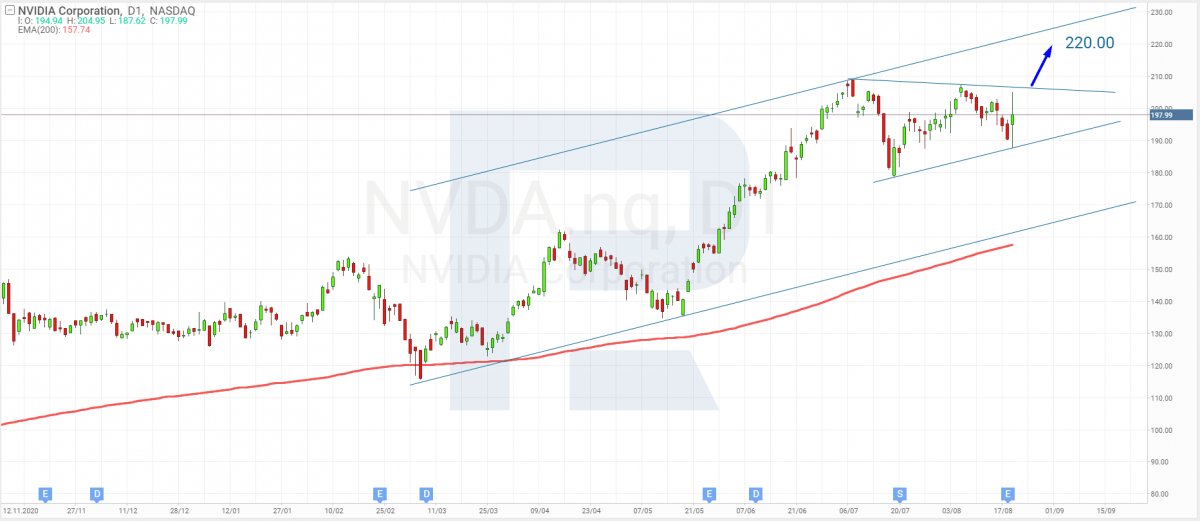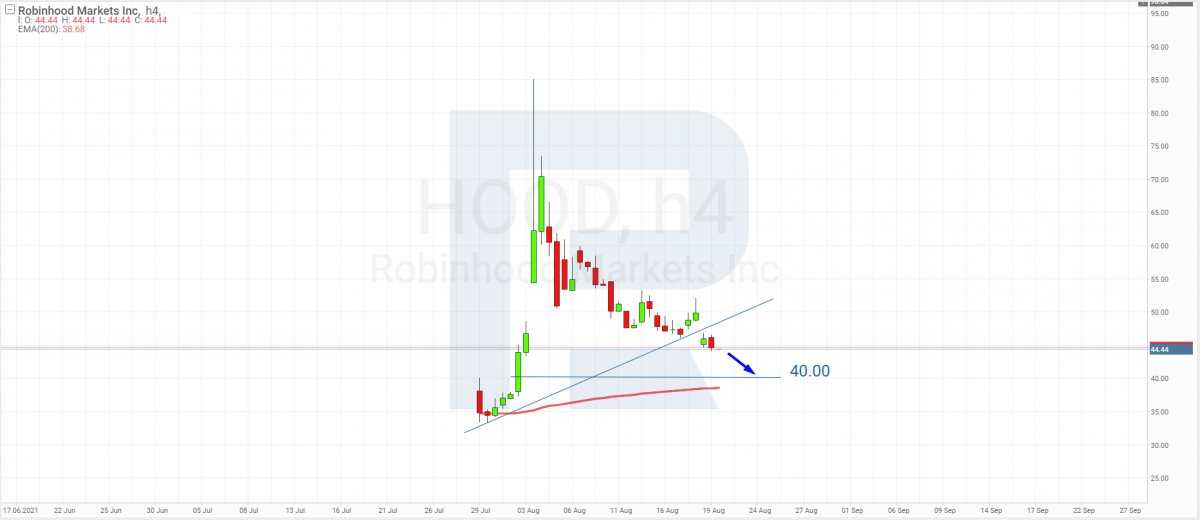Quarterly Reports of Nvidia and Robinhood Markets

4 minutes for reading
I'm happy to share with you the most interesting financial news. Today this will be quarterly reports of Nvidia and Robinhood Markets, the reaction of the stock market to the statistics, and tech analysis of these companies by Maksim Artyomov.
Nvidia report: stocks growing after revenue hits records
On Wednesday, August 18th, a quarterly report was presented by an American developer of processing units and chips Nvidia. The company still makes the most money on selling graphic cards and data center accelerators — $3.06 billion (+85% against the same period of last year) and $2.37 billion (+35%), respectively.
Sales of rendering accelerators grew by 156% y/y, reaching $519 million, and sales of microchips for the car industry — by 37%, to $152 million.
Licensing of intellectual property and OEM brought $327 million.
Note that sales of mining cards from the CMP series didn't live up to the expectations of either the management or Wall Street experts. The forecast had been $400 million yet the real sum hardly reached $266 million.
If you hoped that in 2022 we wouldn't face the shortage of graphic cards anymore, the head of Nvidia Jensen Huang has bad news for you. Analysts of the company forecast that the shortage will live through the next year.
On the day when the report was published the stock price of Nvidia (NASDAQ: NDA) decreased by 2.15% to $190.4. However, the next trading session closed with growth by 3.97% to $197.98.
Important report details
- Revenue — $6.51 billion, +68%, forecast — $6.32 billion.
- Return on stock — $0.94, +276%, forecast — $0.9.
- Net profit — $2.37 billion, +282%.
Tech analysis of Nvidia shares by Maksim Artyomov
The shares of NVIDIA Corporation demonstrated increased volatility after the quarterly report was issued. The quotations corrected and, remaining inside the ascending channel, formed a tech analysis pattern Wedge.
Going by the pattern, the stock price might grow higher. The aim is $220. The uptrend is supported by the 200-days Moving Average that is also growing.

First report after an IPO sent Robinhood shares down
On August 18th, after trades closed, an American broker Robinhood Markets presented its first quarterly report after an IPO. The main focus must be on the size of the net loss — almost $502 million. The thing is that a year ago, when private investing was flourishing, the company was profitable, yielding $58 million.
Another detail that attracted attention of analysts and investors was the revenue from crypto trades. It sized $233 million, leaping up by 4,560%, higher than the revenue from selling securities.
Active work of Robinhood Markets with crypto scares away experienced investors: such activities might attract closest interest of American regulators. But this is not it. The company reported that in the nearest future it might need money for business development, which should mean extra emissions. And no unvestors is happy when their share in the company shrinks.
As a result, on the next day after the publication the stock price of Robinhood Markets (NASDAQ: HOOD) dropped by 10.26% to $44.69
Important report details
- Revenue — $565 million, +131%, forecast — $502 million.
- Loss on stock — $2.16, +2, 260%, forecast — $0.26.
- Net loss — $501 million, +971%
Tech analysis of Robinhood Markets Inc by Maksim Artyomov
After growth on the IPO, Robinhood shares are going down. It is now very well visible that the stock was pumped up by speculators, skimmed it on the highs, and are now sending the price down to optimum values.
The next goal might be the support level of $40. However, we might hope that after the agitation subsides, the quotations might bounce off the support and firm an uptrend.

Summing up
Last Wednesday, quarterly reports were provided by a manufacturer of microchips and graphic cards Nvidia and an online broker Robinhood Markets. The first company reported all-time high revenue, including from the main segments, which meant almost 4% growth of its shares. The second one disappointed investors by growth of net losses and possible extra emissions, which dropped its quotations by 10%.







